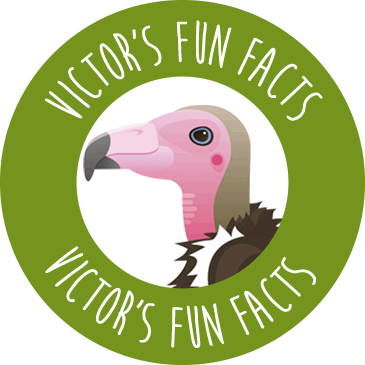
You’ve probably noticed that we’re passionate about birds of prey. If you’ve visited and seen any of our displays or talked to anyone on our team you’d probably agree that if there’s one thing we love to do it’s talk about them! That’s why we’re sharing this with you in our podcast, ‘Nature’s A Hoot’.
Discover the fascinating world of feathers and talons in this podcast dedicated to birds of prey and their place in the natural world. Join us and uncover hidden secrets of these unique predators to help us understand how we can conserve some of the most endangered species on our planet today.
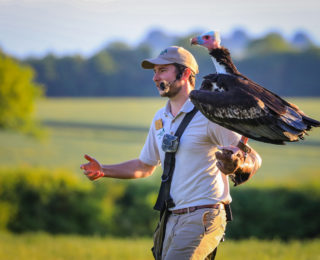
Host of Nature’s a Hoot
Tom has had a lifelong passion for birds of prey and the natural world that surrounds them. He began co-writing, hosting and producing the Nature’s a Hoot podcast in 2020, driven by a desire to get as many people as possible enthused and informed about some of the world’s most threatened birds of prey. In each episode, Tom shares insight into the fascinating lives of wild birds of prey and the work keepers, researchers, biologists, ecologists and conservationists do to protect them.
Tom is the Deputy Head of Living Collection at the Trust and has worked hands-on with birds of prey for more than 15 years. Tom also hosted ‘Stories from the Field’ a documentary produced by the Trust in 2021 focusing on our work with kestrels. He can regularly be found commentating for our jaw dropping flying displays as part of the Trust’s daily timetable.
When not podcasting or caring for our flying team, Tom can be found at home, exploring nature with his family or reading bedtime stories to his son (usually with birds in them somewhere!).
Released on the first of each month, be sure to listen out for our regular feature on the show where we’ll offer some helpful tips on how we can all do our bit to help wildlife in our own outdoor spaces. Subscribe to our podcast via all major podcast platforms including Breaker, Overcast, Pocket Casts and RadioPublic.
If you don’t listen to podcasts via an app and would prefer to listen online, you can do so at Anchor FM.
In each episode we share news, research and top tips that we’ve learnt. You can find out more and read the original articles, research and documents in the pages we’ve shared below.
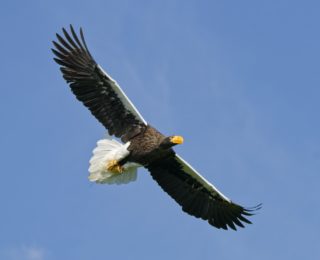
In the furthest eastern reaches of Siberia, across the remote rocky seacoast and rivers and around the islands, you can find one of the largest species of eagle in the world: the Steller’s Sea Eagle. Join Tom as he discovers more about this huge eagle and catches up with James Knight from the Bird Team at the Trust about his journey whilst training Kiara, the brand new addition to our flying team.
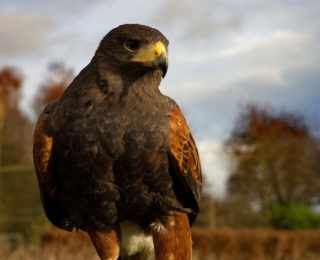
The Harris’ Hawk. Nicknamed the ‘wolves of the sky’, these birds are able to collaborate to secure a meal and to boost their chances of evading predators – quite unlike other species of birds of prey. Join Tom Morath as he delves into new research exploring the reasons why these sociable, agile and powerful birds are now opting to co-habit with us humans in urban environments, and what this means for their hunting habits.
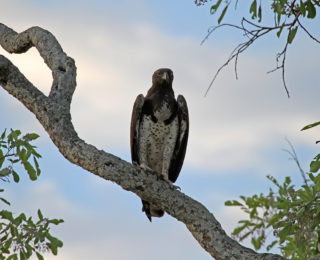
With their long wingspan and at a bulky 4kg or more, the Martial Eagle is Africa’s largest eagle, dominating the sky they fly in where they take their place as an apex predator. They are a truly awesome species. The downside though, is that they’re under threat. Join Tom as he talks to South African-based conservation biologist Dr Megan Murgatroyd about the work she’s doing to gather information about the species that could prove invaluable to their survival as a species into the future.
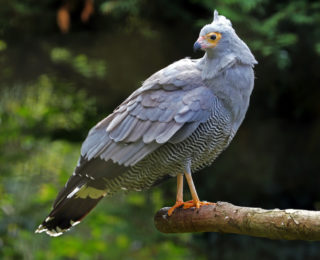
With a wide visual field and incredibly bendy legs, the African Harrier-Hawk is a bird of prey with unique adaptations. Our Conservation and Research Team have been working alongside scientists from other research institutions to find out more about these brilliant birds. In our next episode of Nature’s a Hoot, join Tom as he chats to one of these scientists, Dr Simon Poitier, about a new study involving our resident African Harrier-Hawks, Josephine and Baba, and how findings could help conservation efforts and perhaps even the world of robotic sciences!
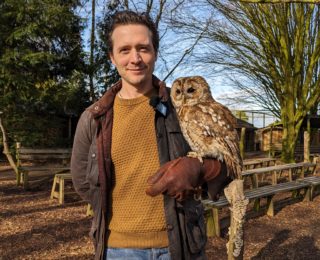
It’s no secret, here at the Hawk Conservancy Trust we love talking about birds of prey! But for many species across the world, things are not looking good. It’s arguably never been more important to get excited about nature than it is today. On the next episode of our podcast, Nature’s a Hoot, join Tom Morath with actor, artist and fellow wildlife podcaster David Oakes! Listen all about finding time for nature, tracking golden eagles and how arts and creativity can support conservation.
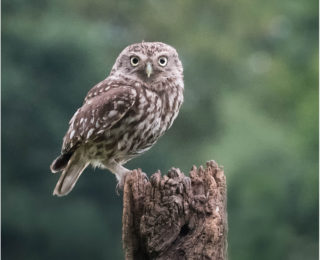
Standing no more than 23cm tall, the Little Owl is the smallest species of owl in the UK! The Hawk Conservancy Trust has been monitoring and supporting Little Owls through our Raptor Nest Box Project for over 15 years. Join us for another episode of Nature’s a Hoot, where Tom chats to Dr Matt Stevens, our UK Conservation Biologist, to find out more about this charismatic species and the work he does to help conserve them.
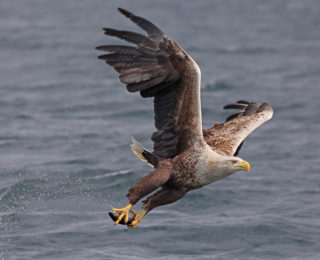
Over the vast expanse of water, wind whipping up the salty air onto the land, there are a great many sights and sounds to be heard along our British coastline and over our wetland habitats. These special landscapes are home not only to species of fish and gulls, but also to the largest bird of prey in the UK – the White-tailed Eagle. Join Tom as he chats to Steve Egerton-Read – the White-tailed Eagle Project Officer for Forestry England – all about this incredible species.
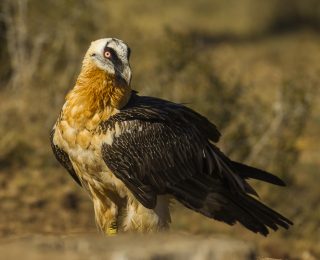
Way up in the mountainous slopes, in Europe, Africa and Asia, one of the world’s rarest vultures soars high above the rock and snow in search of a meal. At first glance, you could be forgiven for thinking you’ve spotted some mythological creature – the orange-tinted feathers and diamond/wedge-shaped tail more akin to stories of dragons than vultures. In this new episode, Tom Morath discovers more about one of the most striking yet endangered vulture species in the world – the Bearded Vulture.
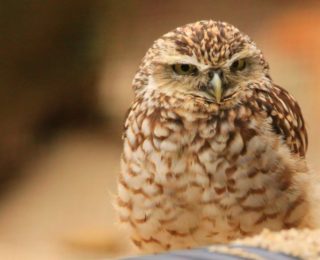
In open prairies and grasslands from Western Canada all the way to Mexico, an owl digs in the soil, excavating an underground home. This is the Burrowing Owl, a curious bird with a surprising lifestyle of subterranean living and a taste for beetles and small rodents. Join Tom in the latest episode of our podcast as he digs under the surface to explore the underground lives of the Burrowing Owl – a species of tiny stature but huge character!
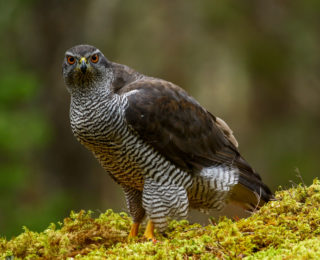
This month, join Tom Morath and Hawk Conservancy Trust President, Chris Packham, as they share their passion for Goshawks – an almost legendary native bird of prey. These incredible birds are able to navigate the interwoven branches of our native woodland with ease and have a practically unrivalled reputation for hunting, making them an especially impressive species to spot!
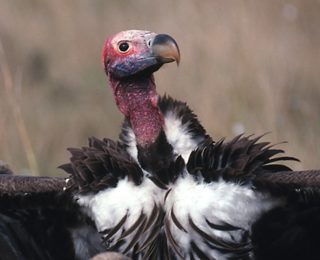
The Lappet-faced Vulture is one of the largest species of vulture in the world with a wingspan of over 2.5m and weighing in at around 7kg! Despite their impressive build, they are a species in desperate need of our support. This month, Tom Morath teams up with our Head of Conservation, Research and Education, Dr Campbell Murn, to present our plans to support this incredible but endangered vulture.
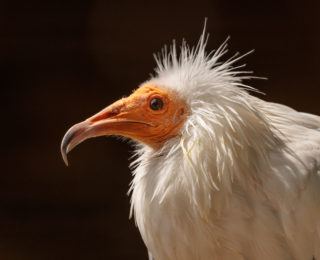
Egyptian Vultures are smart, can easily equal any eagle when it comes to soaring ability and must have the funkiest white hair-do (feather-do?) of any bird of prey! In this brand new episode of Nature’s a Hoot, join Tom Morath, Deputy Head of Living Collection, and Dr Vladimir Dobrev, Conservation Officer from the Bulgarian Society for Protection of Birds, to discover more about the Egyptian Vulture and the work being done to protect this endangered species.
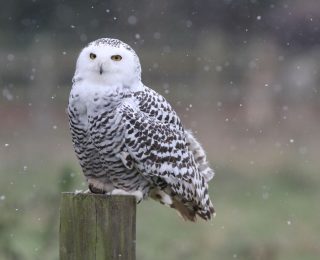
With pure white feathers and piercing yellow eyes, the Snowy Owl is probably one of the most recognisable species of birds of prey in the world. In this episode, join Tom Morath to discover how this species survives in its sub-zero habitat, what they find to eat in their tundra habitat and how scientists are studying their movements in the wild to understand how threatened they might be and what can be done to protect them.
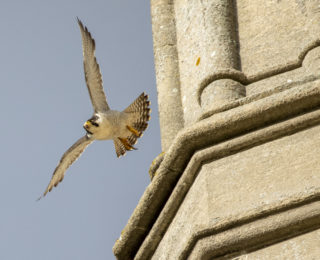
Take a dive into the world of speed with the species awarded the title of fastest animal in the world – the Peregrine Falcon. Discover just how fast these birds can travel, how they’re faring in the wild in the UK and the part that the Hawk Conservancy Trust plays in giving Peregrine Falcons and many other species of raptors every chance at success.
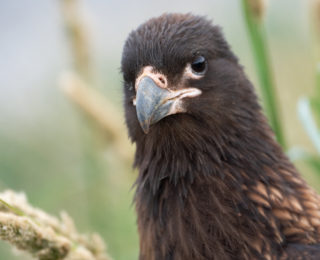
Join Tom Morath in this new episode of Nature’s A Hoot as he sits down with Marion Paviour Award winner Katie Harrington to investigate one of the most interesting and charismatic birds of prey around – the Striated Caracara. Their adaptability and resourcefulness has often lead to them being known as the ‘most intelligent bird of prey in the world’!
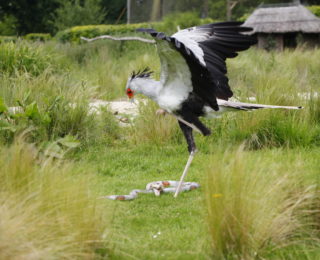
Secretary Birds are one of the most bizarre birds of prey you’ll ever see, and certainly one of the largest. With a great crown of feathers upon their heads, and long legs standing them at almost four feet tall, the Secretary Bird looks as if it would be more at home in Jurassic Park, or the artwork of a Dr Suess book. Join Tom Morath in this new episode of Nature’s A Hoot as he discovers more about this fascinating creature, and their famous killer kick!
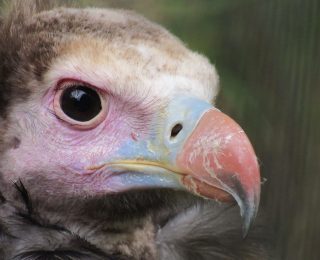
Ugly, menacing and unhygienic – Just some of the words you might have heard to describe some of the world’s most efficient scavengers – the vultures. These winged carrion-eaters have long since been synonymous with death and destruction. Our popular culture likens them to our least favoured political figures and even children’s film and television label them as the bad guys. But do vultures really live up to this cruel and cowardly reputation or is there more to it than that?
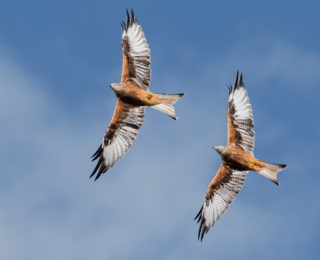
In recent years, the Red Kite has made a phenomenal come-back to our British skies. Get to know these beautiful birds of prey a little better and understand how they made it back from the brink of extinction in the UK in this episode featuring Dr Matt Stevens – UK Conservation Biologist at the Hawk Conservancy Trust.
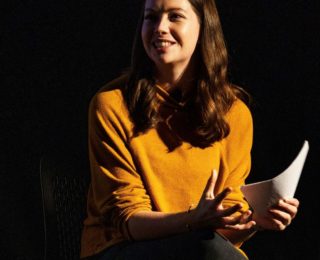
Whether it be by watching the amount of energy we’re using at home, ditching single-use plastics or letting the grass grow wild in the garden, there seems to be countless ways that we can help our imperilled planet. Join Tom as he chats to Emma Brisdion, science communicator and fellow podcaster (For What It’s Earth, The Lodge Cast, Small Screen Science) specialising in sustainability and finding the little things we can all do to make a big difference in the midst of a climate crisis.
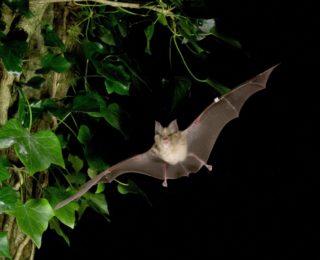
Listen in on a walk through the grounds of the Hawk Conservancy Trust after hours as Hannah and Tom join Mark Ison (Bird Team member and ecologist) to complete a survey of the on-site wild bat population. Learn more about these intriguing flying mammals and how to identify some of the more common species found in the UK. The Matter of Fact Challenge returns as our hosts each champion a species for the top spot for best camouflage. The podcast bids a reluctant but fond farewell to Hannah.
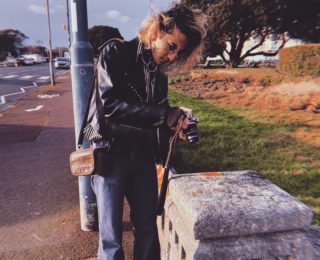
On this episode Hannah and Tom welcome journalist, marine biologist and wildlife filmmaker, Dawood Qureshi (they/she), to hear all about their love of wildlife. From Ospreys to Dinosaurs, Bumblebees to Chocolate-chip Starfish, Dawood will share their passion for storytelling as a way to raise awareness for nature and what it’s like working for the BBC Natural History Unit.
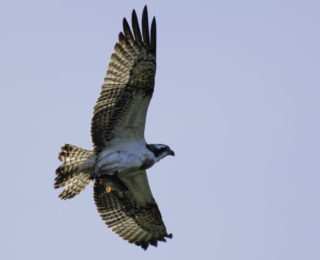
On this episode we explore the fascinating world of animal migration. Join Tom and Hannah as they chat about why certain species migrate, how they know where to go, and the epic distances some of them travel on their migrations. We delve into the brilliant initial results from our Egyptian Vulture Project and hear from Dr John Burnside who, along with colleagues, is leading the project researching the migrations of Egyptian Vultures in Central Asia. We also continue our Matter of Fact Challenge, this time it is (of course!) Most Impressive Migration!
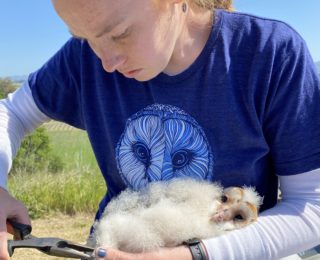
Hannah and Tom are back with a new series of Nature’s a Hoot for 2022. Join them both as they prepare for the new year ahead of them. They’re also joined by Jaime Carlino, a graduate student on the Humbolt State University’s Barn Owl Research Team. Jaime discusses how her work studying Barn Owls is helping us understand the species success when it comes to breeding.
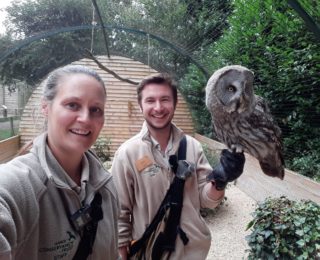
Can you believe it’s been a full year since we launched our wildlife podcast, Nature’s a Hoot? To close our second season, in this month’s episode, Tom and Hannah spend a day in one another’s shoes. Hannah joins the Bird Team while Tom tries his hand at Conservation and Research – what could possibly go wrong? Listen in as Tom shares some big news in light of a recent eco-anxiety article (written by previous guest – Sophie Pavelle) and we reveal the winner of last month’s Matter of Fact Challenge.
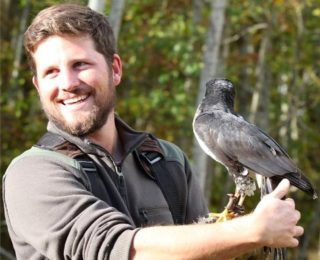
How does a bird of prey see, hear, smell and taste the world? Is being told you have ‘eyes like a hawk’ a compliment? How do we measure all these factors? Find out in this month’s episode as Hannah and Tom discover the mysteries of raptor senses, with special guest scientist, falconer and raptor enthusiast Dr Simon Potier.
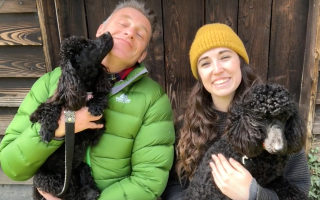
Catch up with Hannah and Tom as they delve into more wildlife topics and chat to Megan McCubbin about what it was like to write a book alongside Chris Packham and then publish it during a global pandemic. The Matter of Fact Challenge returns for another month – this time Hannah and Tom pick the Most Impressive Plant.
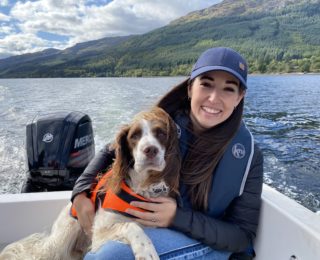
Hannah and Tom are joined by naturalist, wildlife author and Springwatch presenter, Megan McCubbin, as she discusses her work with wildlife and what it’s like to talk about our wonderful natural world live on the BBC – even when it doesn’t show up on time. Listen out for this month’s Top Tip and our regular feature – the Matter of Fact Challenge. This month it’s Most Beautiful Insect!
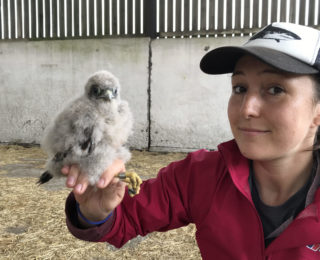
On this month’s Nature’s a Hoot Tom and Hannah delve into the world of British Falcons, from Peregrine Falcons to Hobbies, we explore these epic predators, the many threats they face, and how wonderfully adaptable and diverse they are. We have a brilliant chat with our Marion Paviour award winner from 2020, Conservation Ecologist Dr Georgia Jones about her fascinating research into Kestrel diets, and of course, we present our entries for Bravest Animal in the Matter of Fact Challenge, who will be your winner?
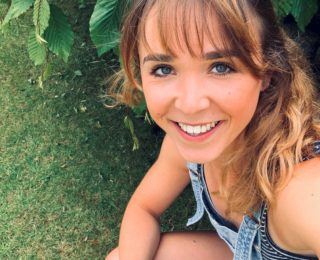
We’re joined by zoologist and science communicator, Sophie Pavelle, for a chat about, long walks, beavers, water boatmen and how laughter can help to inspire us into loving the natural world. Our new feature, the Matter of Fact Challenge, returns as Hannah and Tom go head-to-head to decide on the animal kingdom’s best parent.
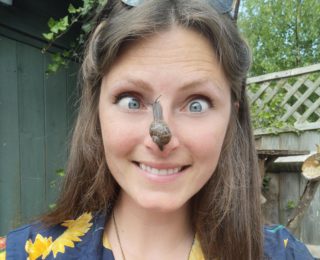
This month we welcome our special guest chat, Lucy Lapwing, an inspiring science communicator and self-confessed ‘nature nerd’! Tom and Hannah also share their recent wildlife sights, and revel in the onset of spring. We also reminisce about Nature’s a Hoot Live – Kestrel Special, our first live event, and we introduce our new feature the Matter of Fact Challenge!
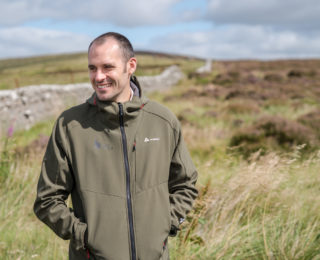
Hannah and Tom chat about why involving the local community is important in conservation, both in developing and developed countries. Hannah catches up with friend and fellow conservationist, Kevin Cumming, who was the Project Leader at the Langholm Initiative, about the Langholm Moor Community Buyout, the many wonderful species and habitats it supports, and what it means for the people living there.
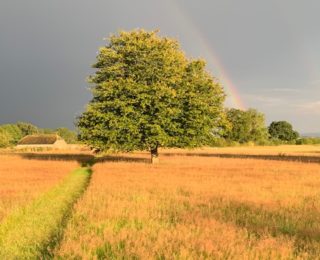
Join Hannah and Tom as they discuss the research and dedication that goes into rewilding projects and the benefits they can have on habitats and the ecosystems that rely on them. Tom heads to the Cotswolds to meet Tabitha Rose – a landowner who has decided to turn her 70 acres of farmland and woodland into a haven for wildlife.
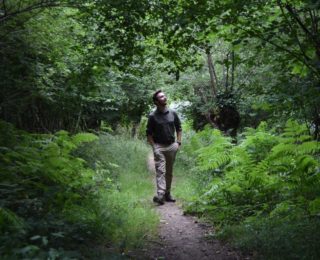
It’s easy to feel a bit down in winter as the nights draw in, with shorter days and less time to get outdoors. We discuss the importance of spending time in nature, even in the winter! Hannah also chats to our guest, Dr Kayleigh Wyles, an environmental psychologist from Surrey University, about her work with citizen science and nature connection, and an exciting study we’ve been working on together at the Trust exploring the impact wildlife can have on our well-being.
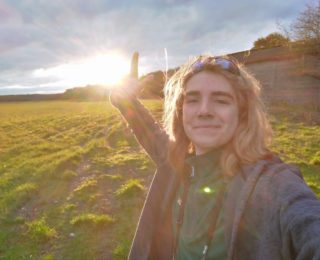
We give our reaction to the recently televised Extinction: The Facts programme, pondering the state of our natural world, and talk to up-and-coming conservationist and broadcaster, Indy Greene about his experiences as a young wildlife enthusiast.
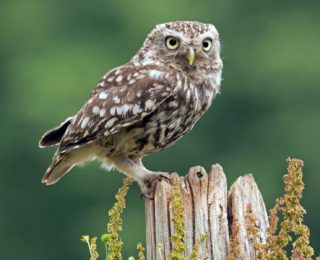
Read more about Nature’s a Hoot, and access resources, photos and insights from our second episode, ‘British Owls’. This episode delves into the magical world of owls; Tom and Hannah reminisce about the owls they have seen in the wild and share their tips on spotting owls where you live.
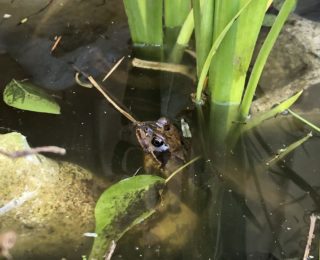
Read more about Nature’s a Hoot, and access resources, photos and insights from our first episode, ‘Inspired by the Wild’. In this first episode we feature what inspires us about nature, how COVID-19 might have impacted wildlife across the world and our first top tip for helping nature to thrive where you live.
